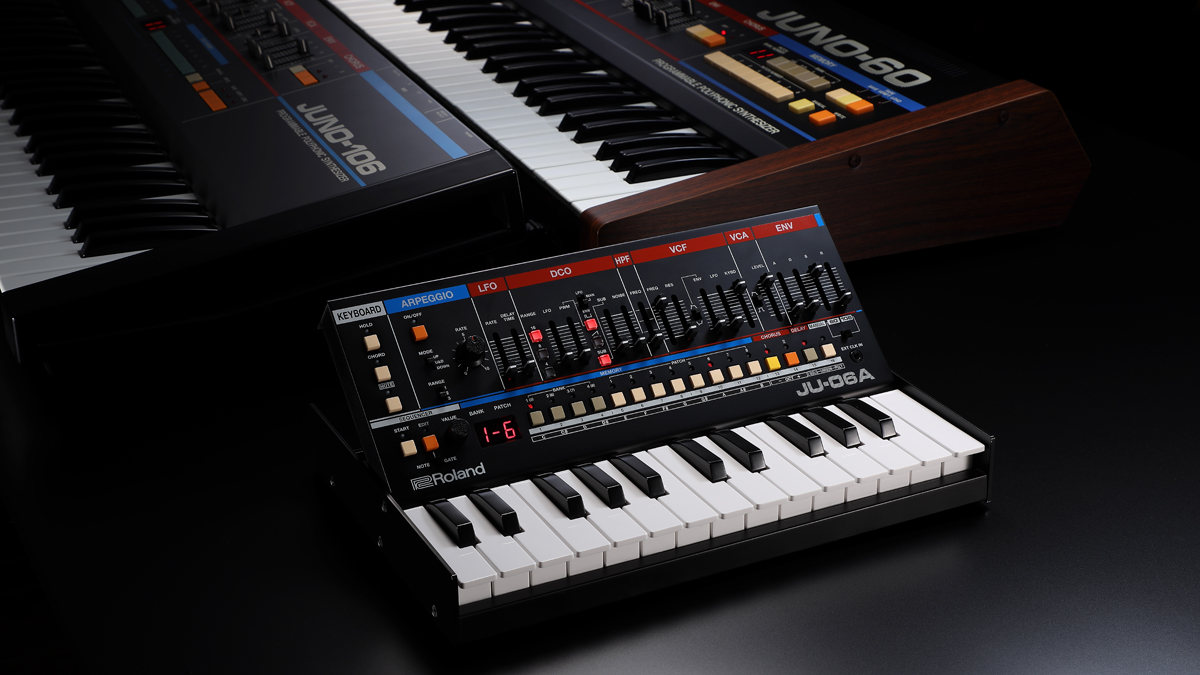The beginner’s guide to: synthwave
The brooding electronic music microgenre that harks back to the ‘80s

Music consumption in the 21st century is unrecognisable to previous generations, with huge shifts in the spaces we associate with musical styles and their organic creation.
In the ’80s, the places you’d find electronic music were clearly defined: clubs, radio, MTV or other music television shows, record shops and maybe the music press.
In 2021, you’re just as likely to discover music via video games, movie soundtracks, streaming TV series or social media platforms.
One perfect example of this shift in emphasis comes in the form of synthwave, the loosely defined genre that emerged in the first decade of this century, stylistically drawing on ’80s synth-pop, updated with modern production values. This distinctly retro microgenre emerged not via a particular club scene or an influential DJ, but from an organic coalescence of smaller trends, some online and some in other cultural spaces.
A neat starting point for the synthwave movement is the release of Grand Theft Auto: Vice City, in 2002. It wasn’t by any means the first video game to feature licensed music in its soundtrack, but the extensive choice of radio stations on offer was a phenomenon in itself.
Cruising around a fictionalised 1980s Miami in a Lamborghini Countach-inspired Infernus supercar, listening to the likes of A Flock Of Seagulls, The Human League and Gary Numan on the in-game Wave 103 radio station, helped define a retro aesthetic that chimed with emerging trends for retro dance music.
Riding the wave
Perhaps the defining moment for synthwave came in 2011, with the release of Drive, Nicolas Winding Refn’s action drama movie starring Ryan Gosling as a stuntman and getaway driver. The movie’s soundtrack was a huge success, including tracks by Kavinsky, College, Johnny Jewel (as part of Desire and Chromatics) and composer Cliff Martinez.
Want all the hottest music and gear news, reviews, deals, features and more, direct to your inbox? Sign up here.
Sonically, it was a distinctly retro take on synth-pop, updated in a knowing, arch style.
Since then, the synthwave baton has been picked up by the likes of The Midnight, FM-84, Timecop1983, Ollie Wride, Violet Days, Savior Adore, Essenger, Gilligan Moss and Primo The Alien.
Much of the appeal of synthwave comes from the fact that it’s electronic music that’s defiantly removed from club culture. Sure, there’s a crossover with acts like Justice and Kavinsky, who straddled both worlds, but a lot of synthwave is song-driven and lower tempo than similar genres like electro house or nu-disco.
As such, synthwave’s relevance is unusual in electronic music terms. You’d be hard pressed to name a high-profile synthwave club night or even a major synthwave label that has crossed over from cult status to become a household name in broader music circles.
The wider retro culture and visual aesthetic of synthwave feels almost as important as the music itself.
Instead, it’s a genre that shows its relevance and impact in other ways. Take, for instance, the soundtrack to Netflix’s smash hit Stranger Things series, which premiered in 2016. As part of the retro styling of the 1980s-set show, the soundtrack featured original music by Michael Stein and Kyle Dixon of Survive, alongside period-correct music by artists from Tangerine Dream to New Order.
The wider retro culture and visual aesthetic of synthwave feels almost as important as the music itself. It even spawned its own term, Outrun, a reference to the 1986 video game Out Run, another title in which driving and musical aesthetics went hand in hand, chiming nicely with Vice City and Drive. A 2019 documentary, The Rise Of The Synths, explored the phenomenon.
Is synthwave still relevant? Consider the success of The Weeknd’s mega hit Blinding Lights, released in November of 2019 but still, at the time of writing, a fixture in the top 10 of the Billboard Hot 100 chart. More than just a passing fad, synthwave can stake a genuine claim to be a lasting cultural phenomenon.
3 essential synthwave production tools
Arturia V Collection 8

Synthwave’s retro production aesthetic relies heavily, as the name suggests, on vintage synths. That’s an unavoidably expensive way to make music these days, as prices of classic instruments have skyrocketed in recent years.
For most of us, software emulations of iconic models are the more affordable option. You can take your pick from hundreds of instruments in the plugin world, but if you want the most comprehensive choice of high-quality emulations, Arturia’s V Collection 8 is the obvious starting point, offering a total of 28 instruments in a €599 bundle.
Vintage drum samples from Loopcloud or Splice
Drums are easily handled using samples, blending acoustic hits with vintage drums and harder-hitting modern sounds to give character and impact.
Most DAWs include a decent selection these days, but if you want more options, subscription platforms like Loopcloud and Splice will give you plenty of royalty-free sounds to choose from.
Korg Minilogue

Vintage analogue synths are usually expensive and sometimes unreliable, but there are modern options, too.
Korg’s Minilogue is one of the most accessible, affordable polyphonic synths, offering four voices of true analogue power at around £430. It might not offer the prestige of a classic all-rounder like a Roland Juno-106, but it has a similar ability to turn its hand to most sounds, from fat monophonic basslines to delicate arpeggios, silky pads and beefy leads.


Future Music is the number one magazine for today's producers. Packed with technique and technology we'll help you make great new music. All-access artist interviews, in-depth gear reviews, essential production tutorials and much more. Every marvellous monthly edition features reliable reviews of the latest and greatest hardware and software technology and techniques, unparalleled advice, in-depth interviews, sensational free samples and so much more to improve the experience and outcome of your music-making.
